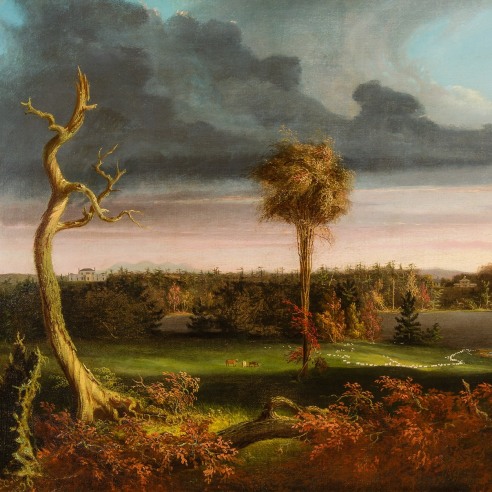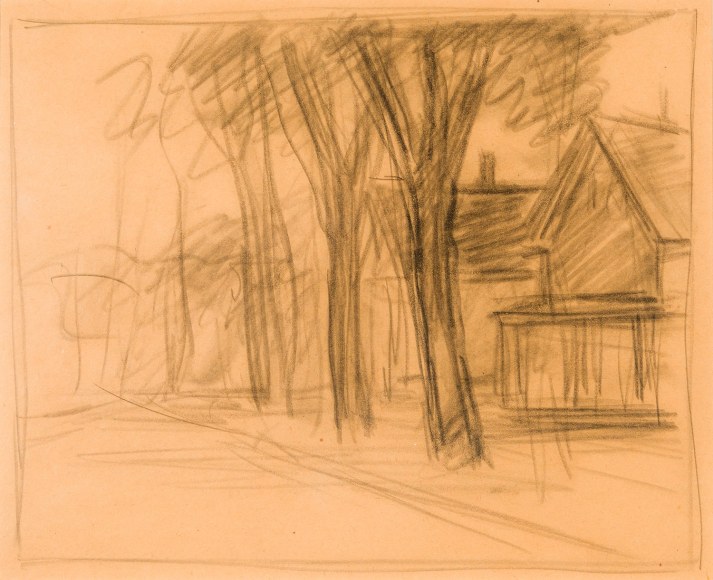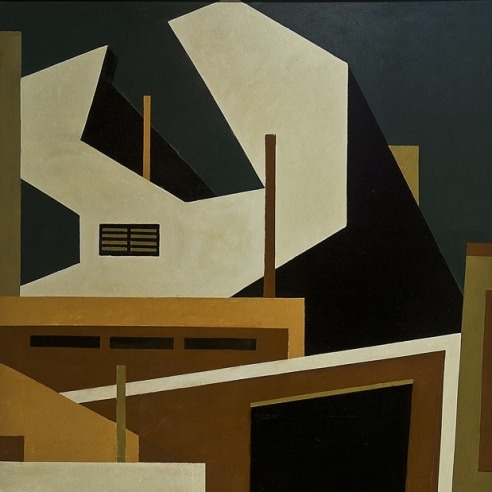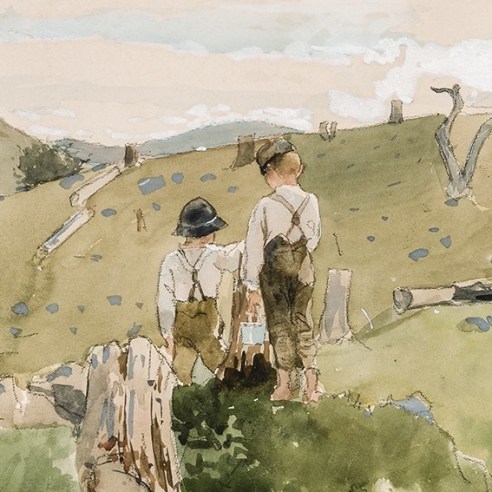
EDWARD HOPPER (1882–1967)
Study for “Two Puritans,” 1945
Charcoal on paper, 8 1/2 x 11 in.
EX COLL.: the artist, until 1967; to his widow, Jo Hopper, Nyack, New York, until 1968; to her estate; to the Reverend and Mrs. Arthayer R. Sanborn, Nyack, New York, and Florida, until 1993; to [Hirschl & Adler Galleries, New York, 1993]; to private collection, California, 1996 until the present
Throughout the course of his career, Hopper executed hundreds of informal sketches of motifs that caught his eye. Favoring black mediums––chalk, charcoal, crayon, and sometimes soft pencil––he drew on scrap paper, inexpensive typewriter papers, sheets from his sketchbooks, and on occasion, high-quality artist’s papers, using his drawings as a means of exploring the aesthetic potential of a particular subject and to work out issues relative to light, shadow, mass, and composition.
Hopper would typically synthesize aspects of different drawings into a finished oil. Such is the case with Study for “Two Puritans,” one of three preliminary drawings he created in conjunction with Two Puritans (1945), a large-scale canvas painted in his studio in South Truro, Massachusetts in October 1945 that features a pair of sturdy Cape Cod-style houses set on a tree-lined street. Hopper’s choice of subject is not surprising, since from the outset of his career he took great delight in the geometry of architectural form. During his years as an illustrator, he would have preferred to draw buildings of all sorts but was discouraged in this pursuit by his editors, who wanted him to portray people. However, after becoming a full-time painter, Hopper was free to depict subjects that caught his eye, including the vernacular architecture––ranging from picturesque cottages and wood frame dwellings to French Second Empire-style mansions––that he encountered on seasonal excursions to New England locales such as Cape Cod, Portland, Cape Elizabeth, and Ogunquit, Maine.
Working in the rapid, improvisatory manner that typified his drawings, Hopper emphasizes the key elements of his tightly cropped design, namely, the row of trees lining the street and the structures standing side-by-side behind them. His interpretation of these motifs and their placement within the composition closely anticipate the finished painting, to which Hopper added a white picket fence while eliminating the foliage of the trees. Subsidiary components of the scene, such as the roadway in the foreground and the distant trees, are portrayed with lighter strokes of charcoal, the artist’s fluent handling contributing to the aura of life and vitality that permeates this intimate tableau.
Hopper seldom sold or exhibited his preparatory drawings, feeling that they served a practical purpose as documents of his thought process and working methodology––personal vignettes that played a vital role in the evolution of a finished painting. Hi’s drawings were extremely important to him, as evidenced by the fact that he kept a large proportion of the thousands of drawings he made over the years. When Jo died in 1968 and bequeathed her husband’s estate to the Whitney Museum of American Art in New York, the artist’s drawings––over 2,500––comprised most of the donation. Groups of Hopper drawings were also given by Jo to her good friend, Mary Schiffenhaus, while others were acquired by the Reverend Arthayer R. Sanborn (1916–2007), a minister from the First Baptist Church in Nyack, New York, who was close to Jo and Edward in their later years.



